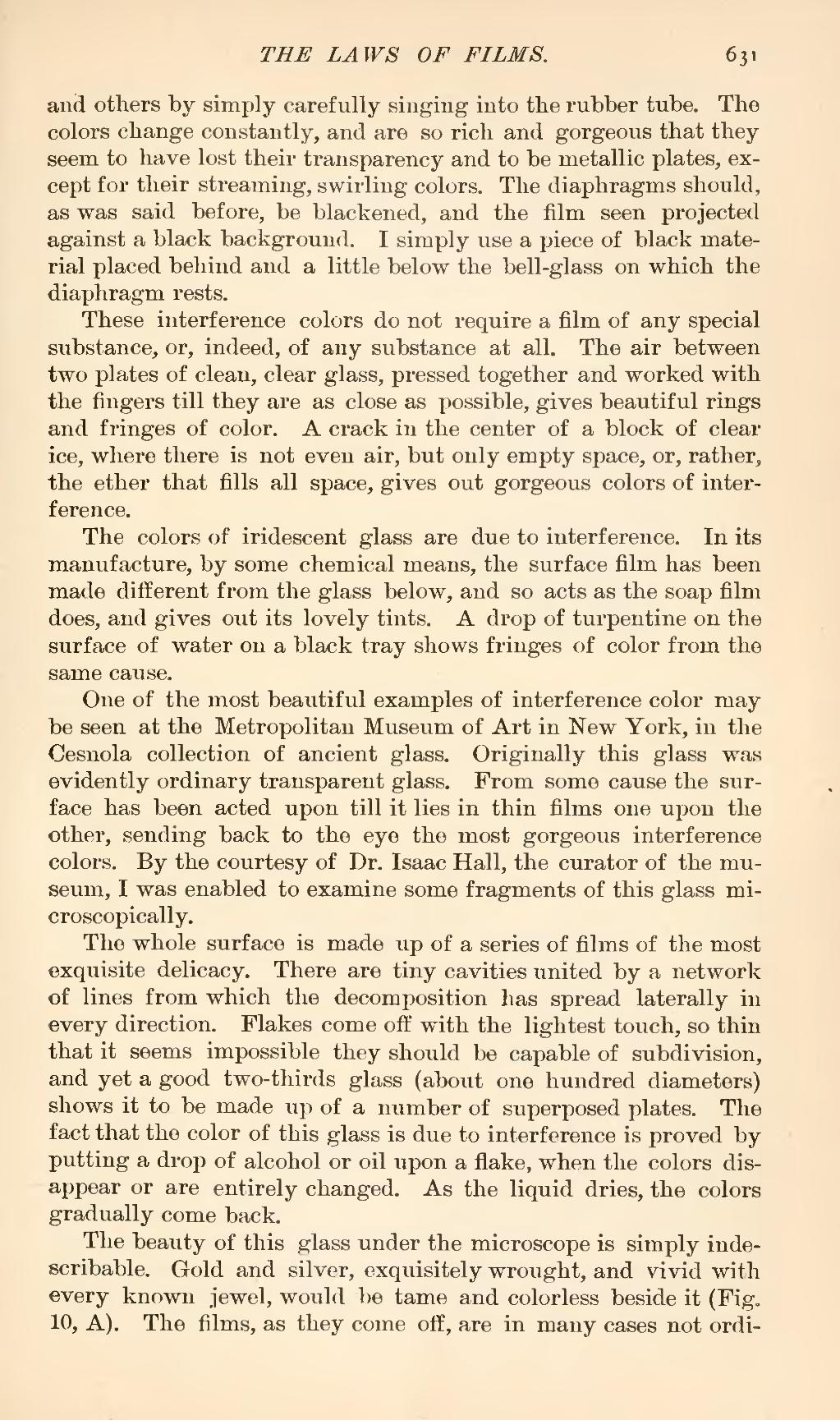and others by simply carefully singing into the rubber tube. The colors change constantly, and are so rich and gorgeous that they seem to have lost their transparency and to be metallic plates, except for their streaming, swirling colors. The diaphragms should, as was said before, be blackened, and the film seen projected against a black background. I simply use a piece of black material placed behind and a little below the bell-glass on which the diaphragm rests.
These interference colors do not require a film of any special substance, or, indeed, of any substance at all. The air between two plates of clean, clear glass, pressed together and worked with the fingers till they are as close as possible, gives beautiful rings and fringes of color. A crack in the center of a block of clear ice, where there is not even air, but only empty space, or, rather, the ether that fills all space, gives out gorgeous colors of interference.
The colors of iridescent glass are due to interference. In its manufacture, by some chemical means, the surface film has been made different from the glass below, and so acts as the soap film does, and gives out its lovely tints. A drop of turpentine on the surface of water on a black tray shows fringes of color from the same cause.
One of the most beautiful examples of interference color may be seen at the Metropolitan Museum of Art in New York, in the Cesnola collection of ancient glass. Originally this glass was evidently ordinary transparent glass. From some cause the surface has been acted upon till it lies in thin films one upon the other, sending back to the eye the most gorgeous interference colors. By the courtesy of Dr. Isaac Hall, the curator of the museum, I was enabled to examine some fragments of this glass microscopically.
The whole surface is made up of a series of films of the most exquisite delicacy. There are tiny cavities united by a network of lines from which the decomposition has spread laterally in every direction. Flakes come off with the lightest touch, so thin that it seems impossible they should be capable of subdivision, and yet a good two-thirds glass (about one hundred diameters) shows it to be made up of a number of superposed plates. The fact that the color of this glass is due to interference is proved by putting a drop of alcohol or oil upon a flake, when the colors disappear or are entirely changed. As the liquid dries, the colors gradually come back.
The beauty of this glass under the microscope is simply indescribable. Gold and silver, exquisitely wrought, and vivid with every known jewel, would be tame and colorless beside it (Fig. 10, A). The films, as they come off, are in many cases not ordi-

